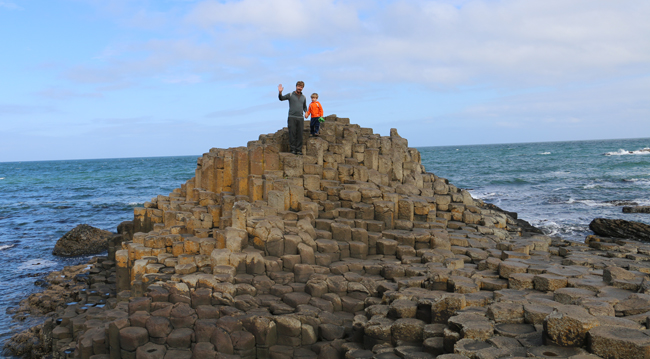The Giant’s Causeway, on the coast of Northern Ireland, is a classic site for beautifully-developed cooling columns in basalt. It should be a stop on any geologist’s Grand Tour of the world’s most important geological locales. Battered by the waves of the Irish Sea, the columns are exposed in three dimensions, and visitors can wander all over them. It’s an excellent way to gain an appreciation for the shape of the columns, and their detailed features – vesicles, ball and socket joints subdividing columns, laterite horizons between flows, spheroidal weathering, etc.
I visited the Causeway last week with the intent of collecting imagery for a virtual field experience. Let’s begin our exploration with some traditional photos:
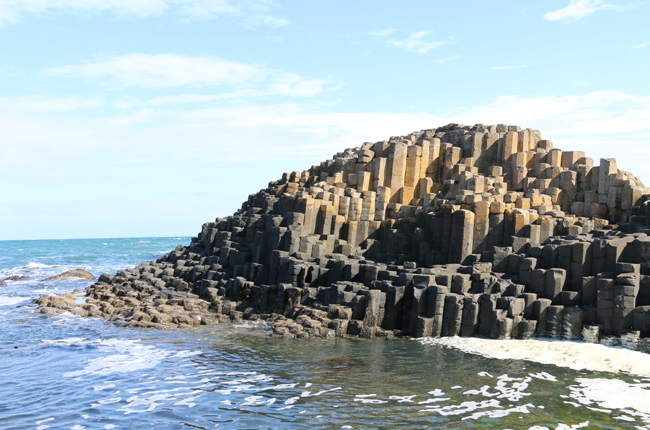
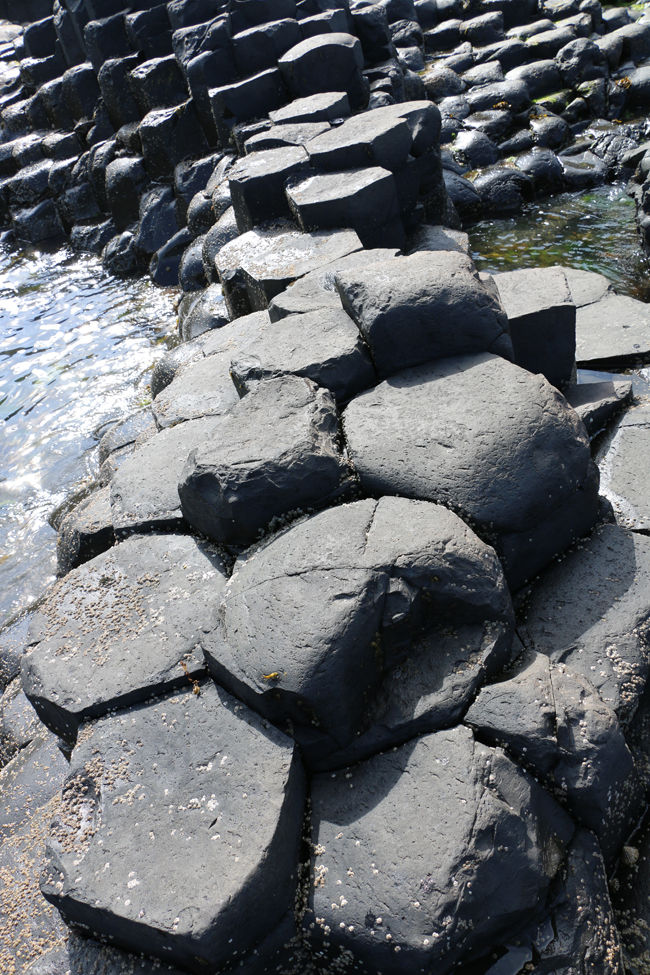

For those who are unfamiliar with cooling lava, this place looked so geometrically regular as to suggest intelligent design – it must be man-made! Or perhaps at least giant-made. The locals attributed the site to a giant, Finn MacCool, who tried to build a causeway to Scotland to aid in an altercation with another giant. The columns were thought to be hexagonal paving stones.
But geologists who are familiar with cooling columns from elsewhere in the world have another explanation.
To suss it out, I brought my field assistant with me:
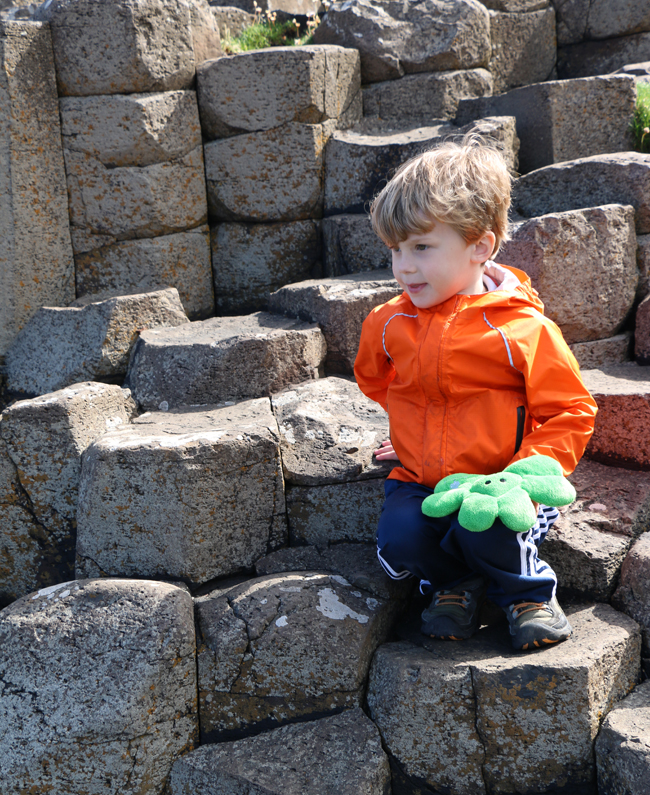 (Note the plush shamrock!)
(Note the plush shamrock!)
It didn’t take him long to find some mud – and in this case, the mud had dried out, producing a set of intersecting desiccation cracks. The mud loses volume when the water in it evaporates – so it contracts. The stresses generated by this contraction are greater than the strength holding together the sedimentary particles in the mud. So they separate. These cracks met one another at a more or less 120° angle. They subdivided the previously-continuous sheet of mud into a polygonal set of chunks.

… This makes them easier to pull up and break out:

The same process is true of cooling basalt. Here, the volume loss is not due to water evaporating, but simply due to the contraction of warm rock into cool rock. Cold rock is more dense than warm rock. Warm rock is more “poofed out” than cold rock. Once again, stresses are induced, and once again, the stresses are greater than the strength of the crystallized basalt. The 120° angle is again prevalent – as three directions of tension are the minimum number (simplest solution) needed to break up a contracting sheet of basalt with ~equally spaced centers of contraction. The result? Three main orientations to the fractures, and as they intersect they make hexagonal blocks.
Not every column is hexagonal in map view; there are also 5 (6-1) and 7 (6+1) sided columns reasonably commonly represented, as with this “daisy” like arrangement. But 6 is most common.
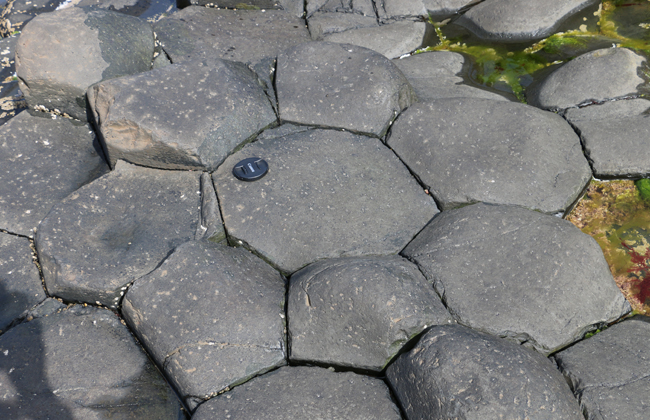
Though the solid blocks created by these fractures appear polygonal on the surface of the flow, as they propagate downward (or upward), they divide the solid basalt into prismatic chunks, the ‘columns.’ These may fracture further as cooling progresses, and the shortest distance from one side to the other is orthogonal to the column’s long (~vertical, in this case) axis:

Here is some fresh basalt – fine-grained (aphanitic), dark (mafic). It’s not actually a very common sight at the Causeway, due to the weathering that takes place more or less constantly in the damp Irish climate:

Here are a few shots of the basalt that’s rotting in place to form semispherioidal “kernstones”:
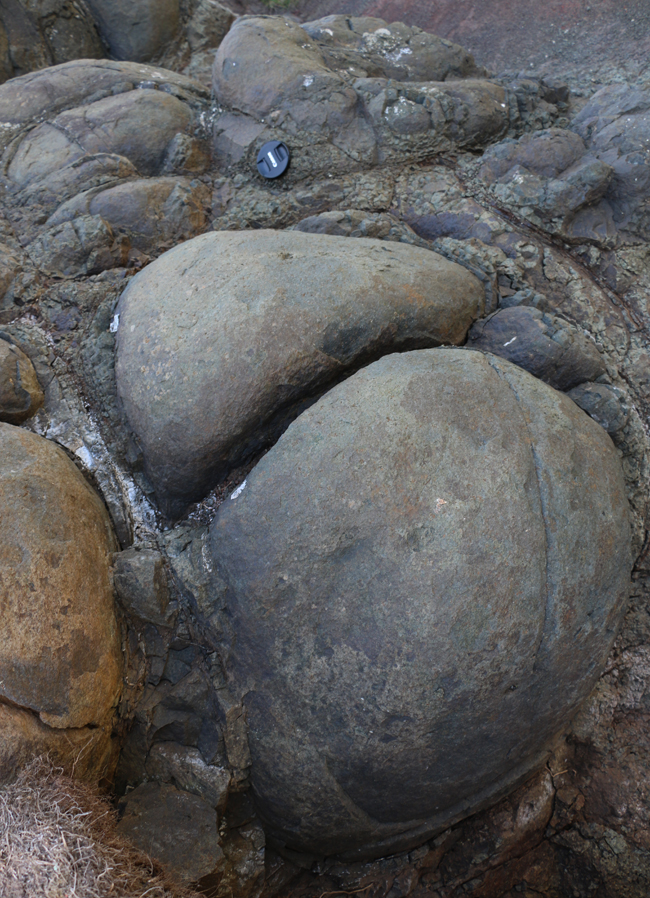
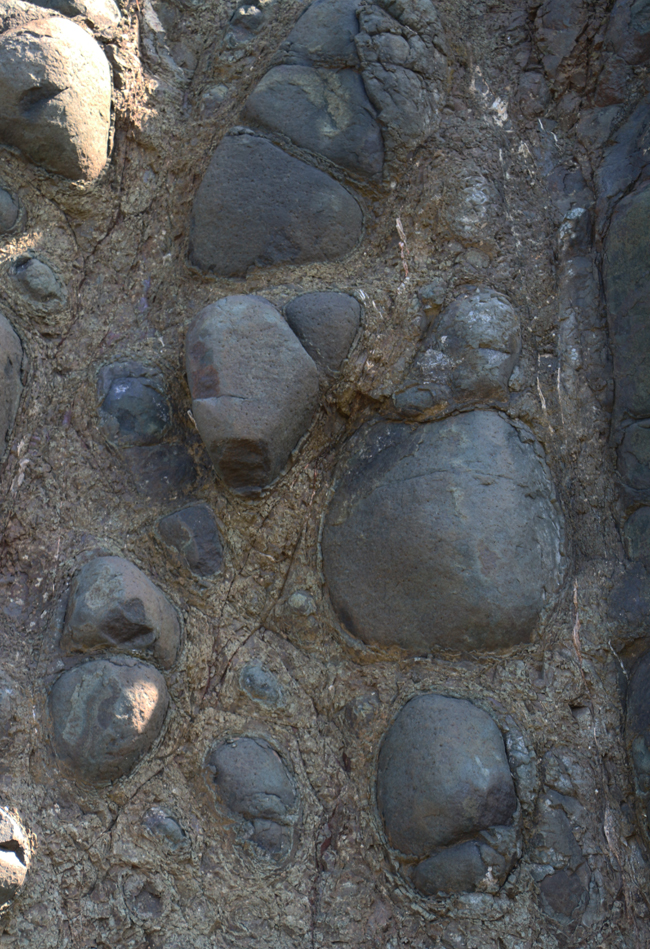
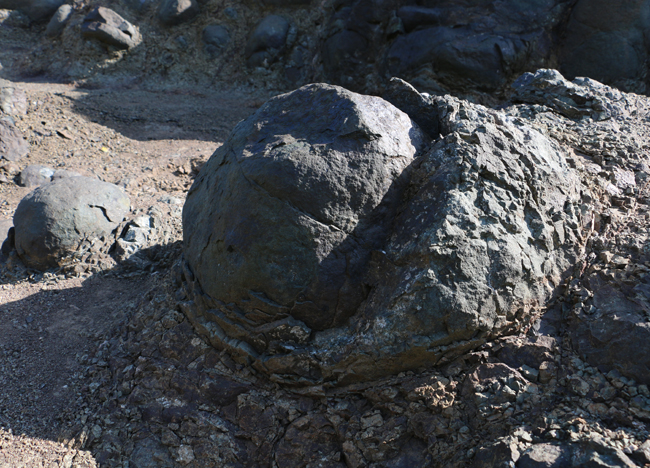
Okay, now for the interactive imagery. Henceforth, all the imagery in this post is “interactive” in the sense that you can manipulate it – choose the level of zoom for the Google Map and the GigaPans, control the level of zoom and the perspective for the 3D models and the 360° spherical photos.
If you need context, here’s a Google Map of the site, though the resolution isn’t especially impressive:
Here are seven GigaPans, showing various aspects of this amazing place:
Link GigaPan by Callan Bentley
Link GigaPan by Callan Bentley
Link GigaPan by Callan Bentley
Link GigaPan by Callan Bentley
Link GigaPan by Callan Bentley
Link GigaPan by Callan Bentley
Link GigaPan by Callan Bentley
Here are two 360° spherical photos made with a Ricoh Theta S:
Spherical Image of the Giant’s Causeway, Northern Ireland – RICOH THETA
Spherical Image of the Giant’s Causeway, Northern Ireland – RICOH THETA
And finally, here are three 3D models of the basalt columns – photo sets by me, with Photoscan model construction by my student Marissa:
Photoscan model by Marissa Dudek
Photoscan model by Marissa Dudek
Photoscan model by Marissa Dudek
We already featured one of Marissa’s 3D models of the “onion skin” spheroidal weathering, but here it is again, along with a second example of that phenomenon:
Photoscan model by Marissa Dudek
Photoscan model by Marissa Dudek
While these media convey a sense of what it’s like to visit the causeway’s geology, if you ever get the chance to visit in person, you simply must. In the meantime, enjoy exploring these images as a ‘virtual field trip.’
